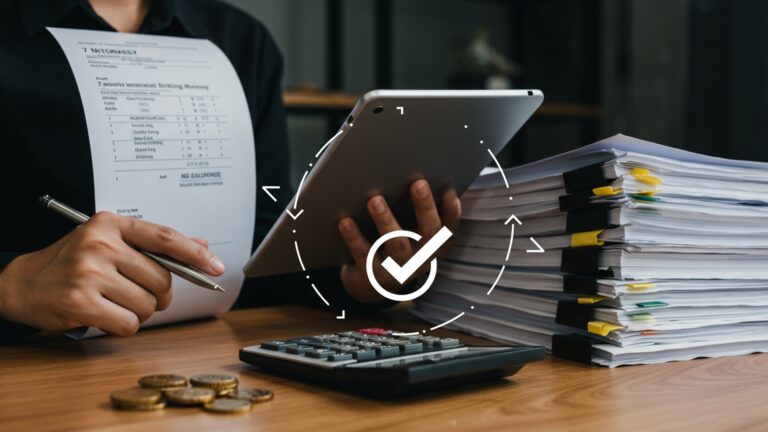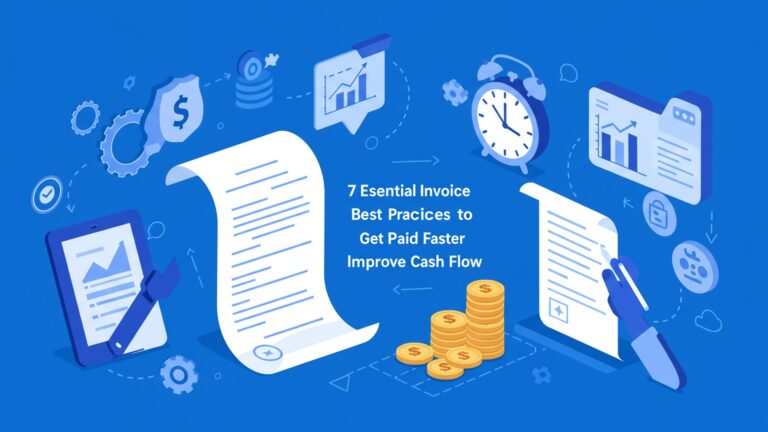Learn 8 Proactive Steps to Minimize Billing Discrepancies Effectively
In today’s intricate financial landscape, businesses frequently grapple with the costly ramifications of billing discrepancies, extending beyond mere revenue loss to erode customer trust and trigger compliance penalties. The rapid adoption of AI-driven reconciliation platforms and real-time data analytics underscores a critical, evolving need for robust, proactive strategies to effectively prevent billing errors before they escalate into significant operational challenges. Modern enterprises recognize that merely reacting to disputes is unsustainable; instead, implementing structured, preventative steps ensures financial accuracy, streamlines operations. bolsters stakeholder confidence in an era of heightened regulatory scrutiny, transforming potential liabilities into operational strengths.

Regularly Review All Statements
One of the most fundamental and effective strategies to prevent billing errors is to meticulously review every single statement you receive. This isn’t just about glancing at the total; it involves a line-by-line scrutiny of all charges. Whether it’s your credit card statement, utility bill, streaming service subscription, or medical invoice, each item warrants your attention.
- Actionable Takeaway
- Definition
Set a recurring reminder on your calendar (e. g. , the first of every month) to dedicate time to this task. Look for unfamiliar charges, duplicate entries, incorrect amounts, or services you no longer use or never authorized. For instance, many people discover they are still paying for a gym membership they cancelled months ago, or a free trial for a streaming service automatically converted to a paid subscription without a clear notification. This proactive habit is your first and most crucial line of defense to effectively prevent billing errors from escalating into significant financial burdens.
A “billing discrepancy” refers to any difference between what you expect to pay and what you are actually charged, or any error in the billing statement itself.
Maintain Detailed Records of Transactions and Agreements
A robust system of record-keeping is invaluable when it comes to minimizing billing discrepancies. Think of your records as your personal financial archive, providing undeniable proof should a dispute arise. This includes not only your payments but also any agreements, contracts, or communications related to services or purchases.
- Actionable Takeaway
- Real-world Example
Keep both physical and digital copies of receipts, invoices, contracts. email confirmations. For online purchases, take screenshots of your order confirmation and shipping details. When discussing issues with a service provider, note down the date, time, representative’s name. a summary of the conversation. A simple spreadsheet can track recurring payments, their due dates. the amount paid. For example, if you return an item, holding onto the return receipt and tracking number is crucial proof if the refund doesn’t appear on your statement. Good record-keeping helps to prevent billing errors from becoming unprovable disputes.
Sarah disputed a charge for a product she returned. Because she had kept the original receipt, the return shipping label with tracking. an email confirmation of the return authorization, she quickly resolved the issue with the vendor, who initially claimed they never received the item.
grasp Your Service Contracts and Terms of Service
The “fine print” in contracts and terms of service is often overlooked. it contains critical data that can significantly impact your bills. Understanding these documents before you commit to a service can prevent many future billing discrepancies.
- Actionable Takeaway
- Comparison
Before signing up for any new service, especially those with auto-renewal clauses, cancellation fees, or tiered pricing structures, read the terms carefully. Pay close attention to sections detailing price changes, data overage fees, early termination penalties. how to cancel the service. Many individuals find themselves locked into contracts or surprised by charges because they didn’t fully grasp these terms. As the legal maxim goes, “Ignorance of the law excuses no one,” and the same principle often applies to contractual agreements. By understanding these agreements, you can effectively prevent billing errors related to unexpected charges or policy violations.
Consider the difference between a month-to-month subscription and an annual contract. The former offers flexibility but might be slightly more expensive, while the latter typically offers a lower per-month cost but comes with cancellation penalties. Understanding these nuances helps you choose wisely and avoid unexpected fees.
Utilize Financial Tracking Tools and Apps
In the digital age, a wealth of financial tracking tools and apps are available to help you monitor your spending and identify potential billing discrepancies. These tools can link directly to your bank accounts and credit cards, providing a centralized view of your financial activity.
- Actionable Takeaway
- Definition
Adopt a budgeting or expense tracking app such as Mint, YNAB (You Need A Budget), or Personal Capital. Many banks also offer integrated spending trackers within their online banking platforms. These tools allow you to categorize your expenses, set budgets. receive alerts if you’re nearing or exceeding spending limits. By regularly reviewing the categorized spending, you can quickly spot unusual or incorrect charges. For example, an app might flag a utility bill that is significantly higher than previous months, prompting you to investigate a potential meter reading error or an unauthorized service. These tools provide an early warning system to prevent billing errors from going unnoticed.
“Budgeting apps” are software applications designed to help individuals manage their income and expenses by tracking transactions, categorizing spending. setting financial goals.
Set Up Account Alerts and Notifications
Proactive alerts from your financial institutions and service providers can be an invaluable asset in preventing billing errors and detecting fraudulent activity quickly. These notifications act as an early warning system, bringing unusual activity directly to your attention.
- Actionable Takeaway
- Use Case
Configure alerts for various scenarios through your bank, credit card company. utility providers. These could include notifications for transactions over a certain amount, charges from unfamiliar merchants, international transactions, low account balances, upcoming payment due dates, or data overage warnings for mobile phone plans. For instance, an alert about a foreign transaction on your credit card when you haven’t traveled abroad could immediately signal potential fraud, a severe form of billing discrepancy. Timely alerts are crucial to help you prevent billing errors and respond swiftly to any unauthorized or incorrect charges.
Maria received an email alert from her bank about a $50 online purchase she didn’t make. Because she had set up transaction alerts, she was able to immediately contact her bank, report the fraudulent activity. prevent further unauthorized charges, saving her from a larger financial headache.
Proactively Communicate with Service Providers
Don’t wait for a problem to escalate into a full-blown billing dispute. Proactive and documented communication with your service providers can clarify potential issues before they appear on your bill, or resolve minor discrepancies quickly.
- Actionable Takeaway
Whenever you make changes to a service (e. g. , upgrading an internet plan, adding a new feature to your phone, cancelling a subscription), follow up with the provider to get written confirmation of the changes and the expected new billing amount. If you have questions about a charge, call or email them immediately for clarification. Document all communications: note down the date, time, the name of the representative you spoke with. a summary of the conversation. Request email confirmations for any verbal agreements. This approach creates a clear paper trail. For example, calling your internet provider to confirm an upgrade price and getting it in writing before the next bill arrives can prevent a surprise charge. Open and documented communication is key to effectively prevent billing errors before they become costly disputes.
Implement a Dispute Resolution Strategy
Despite your best proactive efforts, billing discrepancies can still occur. Having a clear, step-by-step strategy for resolving disputes is essential to ensure you can address them effectively and prevent billing errors from costing you money.
- Actionable Takeaway
- Contact the Provider Directly
- Escalate Internally
- Formal Written Dispute
- Involve Third Parties
- Consider a Credit Card Chargeback
- Case Study
Begin by contacting the merchant or service provider responsible for the charge. Clearly explain the discrepancy, providing all your documentation (receipts, records, communication logs). Request a specific resolution (e. g. , a refund, credit, correction).
If the initial contact doesn’t resolve the issue, ask to speak with a supervisor or manager. Clearly state that you wish to escalate the matter.
If still unresolved, send a formal letter or email outlining the dispute, attaching all relevant documentation. sending it via a method that provides proof of delivery (e. g. , certified mail for letters). For credit card disputes, the Fair Credit Billing Act (FCBA) requires you to send a written dispute within 60 days of the first bill containing the error.
If the provider remains uncooperative, consider reaching out to consumer protection agencies. For instance, the Better Business Bureau (BBB) or your state’s Attorney General’s office can mediate or investigate. For financial services, the Consumer Financial Protection Bureau (CFPB) is a valuable resource.
If the charge is on a credit card and other avenues fail, you can initiate a chargeback with your credit card issuer. This process reverses the charge. it requires substantial documentation and adherence to specific timelines.
A consumer successfully disputed an unauthorized recurring subscription by systematically following these steps: first contacting the company, then escalating when unresolved. finally filing a dispute with their credit card company, leading to a full refund.
Educate Yourself on Consumer Rights and Protections
Empowerment through knowledge is a powerful tool in preventing billing errors. Understanding your rights as a consumer provides you with the confidence and legal standing to challenge incorrect or unfair charges effectively.
- Actionable Takeaway
Take the time to research and grasp relevant consumer protection laws. Key examples include the Fair Credit Billing Act (FCBA) in the United States, which provides specific protections for credit card users against billing errors and outlines a clear dispute process. Familiarize yourself with your state’s consumer protection laws, which often cover issues like deceptive advertising, warranties. refund policies. Reputable sources like the Federal Trade Commission (FTC) website (
ftc. gov
) and the Consumer Financial Protection Bureau (CFPB) (
consumerfinance. gov
) offer a wealth of details and resources. Knowing your rights, such as the 60-day window to dispute a credit card charge under FCBA, means you can confidently challenge discrepancies and enforce fair treatment, significantly helping to prevent billing errors from becoming permanent financial losses.
The Federal Trade Commission (FTC) is the primary federal agency protecting consumers against unfair, deceptive. fraudulent business practices in the U. S. Their website provides extensive guidance on various consumer issues, including billing disputes.
Conclusion
Minimizing billing discrepancies isn’t merely about correcting errors; it’s about fortifying your financial health and cementing unwavering customer trust. By proactively embracing the steps discussed, such as implementing real-time transaction verification and leveraging sophisticated billing and POS software, you actively protect your revenue streams. I’ve personally witnessed businesses dramatically improve their bottom line by simply establishing a rigorous, consistent review schedule and empowering their teams with streamlined reconciliation protocols. Remember, in today’s data-driven retail landscape, accurate billing isn’t just a convenience; it’s a fundamental pillar of operational excellence. Embrace these strategies. you will not only avoid costly disputes but also cultivate a reputation for reliability that truly sets your business apart. Your diligent efforts today will undoubtedly pave the way for a more profitable and trustworthy tomorrow.
More Articles
How to Master Billing and POS Software for Efficient Retail Management
Master These 10 Invoice Best Practices to Ensure Faster Payments
7 Effective Strategies to Avoid Late Payments and Improve Your Cash Flow
Learn 8 Smart Inventory Control Strategies Using POS in India
How to Implement POS Software for Seamless Sales and Inventory Management
FAQs
What’s the main goal of learning these 8 proactive steps?
The primary goal is to help you significantly reduce errors in your billing, whether you’re sending or receiving invoices. By taking action before problems arise, you can save time, avoid financial headaches. maintain better relationships with clients or vendors.
Why is being proactive so vital when it comes to billing discrepancies?
Being proactive means you’re setting up systems and processes to prevent mistakes from happening in the first place, rather than just reacting to them after they’ve occurred. This approach saves a lot more time and money in the long run, reduces stress. builds greater trust because fewer errors mean smoother transactions.
Will these steps help me if I’m receiving bills, or just if I’m sending them out?
Absolutely! These proactive steps are beneficial for both sides of the billing equation. If you’re sending invoices, they’ll help you create accurate ones. If you’re receiving them, they’ll equip you to effectively review and reconcile those bills against your own records, making it easier to spot and address any discrepancies.
What kind of real-world benefits can I expect after putting these steps into practice?
You can anticipate a significant reduction in billing disputes, fewer payment delays. improved cash flow. Beyond the financial benefits, you’ll also see increased operational efficiency, better relationships with your clients or suppliers. a lot less administrative hassle dealing with corrections and arguments.
Are these 8 steps really complicated or difficult to implement?
Not at all. While some might require a bit of initial setup or a change in routine, they’re designed to be practical and straightforward. Many involve common-sense practices like better record-keeping, clear communication. regular checks. The key is consistency. the payoff in reduced stress and errors is well worth the effort.
If I could only focus on one thing, what’s a crucial step to prevent billing issues?
While all 8 steps work best together, a crucial foundation is meticulous record-keeping and clear communication from the start. Ensuring all terms, services. costs are agreed upon and documented thoroughly before any work begins dramatically reduces the chances of misunderstandings leading to billing discrepancies later on.
How often should I revisit these proactive steps to ensure my billing process stays on track?
It’s a good idea to review your billing processes regularly, perhaps quarterly or semi-annually, especially if there are changes in your services, pricing, or team members. Even without major changes, a yearly audit ensures you’re maintaining best practices and adapting to any new challenges effectively.






